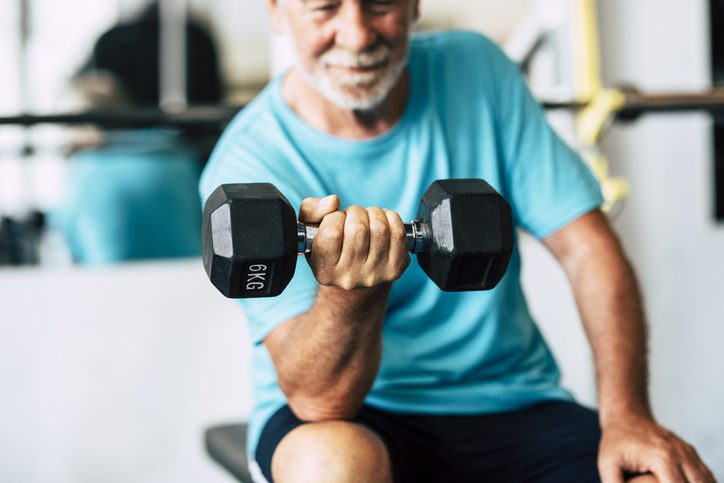Why older runners (and triathletes) need to strength train (and how to get started)
If you're over 35, it's time to start adding some strength to your routine. Here's why (and how)

There’s no way to stop time, but strength training will help you swim, bike and run stronger for longer. Strength training is particularly important for older runners and triathletes, as it helps counteract age-related muscle loss, enhances bone density and improves overall stability, reducing the risk of injuries and promoting longevity. Here’s what you need to know to train and race long and strong.
Combat age-related muscle loss
One of the most significant concerns for older athletes is the loss of muscle mass. Scientific studies consistently emphasize the effectiveness of strength training in combating this age-related decline. Resistance exercises like weight-lifting trigger muscle protein synthesis, promoting the growth and maintenance of muscle mass. Not only will this improve sports performance, it also plays a crucial role in supporting overall mobility and reducing the risk of injuries.
A 10-week strength training program for beginner triathletes
Enhance bone density
Aging often brings a decline in bone density, increasing runners’ and triathletes’ susceptibility to fractures and injuries. Strength training is a powerful ally in maintaining and enhancing bone density; weight-bearing exercises stimulate bone-forming cells, leading to stronger and more resilient bones. For older athletes, this means a reduced risk of stress fractures and a safeguard against the impact-related challenges that can accompany running over time.
Boost your metabolism
Metabolism tends to slow down with age, contributing to a potential decline in energy levels. Strength training, particularly high-intensity interval training (HIIT), can rev up the metabolic rate. This not only aids in weight management, but also provides older athletes with the energy needed to tackle longer distances. As your efficiency improves in swimming, biking and running, your overall performance is enhanced.

Get started today
No idea how to begin? If you have access to a local gym, it’s a great idea to invest in one or two sessions with a trainer to get used to the equipment and learn a few exercises you can do on your own. There are plenty of ways runners and triathletes can work on strength at home, though, and YouTube has many videos that are useful to help figure out how to strength-train at home correctly and safely.
Try bodyweight exercises such as squats, lunges, push-ups, and planks, which require no equipment and effectively target key muscle groups for runners.
Incorporate resistance bands for added challenge; they’re affordable, versatile, and can be used for exercises like leg lifts, lateral leg raises, and upper body workouts.
Start with a set of light dumbbells for exercises like bicep curls, overhead presses and weighted lunges, gradually increasing the weight as you get stronger.
Incorporating some strength training into your routine doesn’t have to take a lot of time–even fifteen minutes after a run a few times a week will make a real difference.
